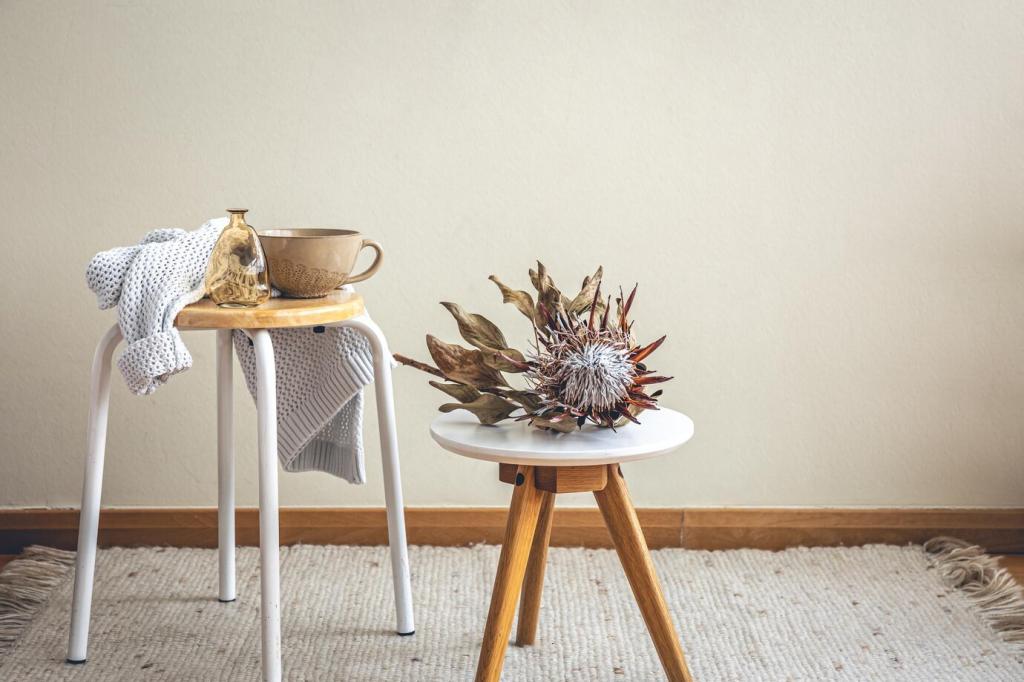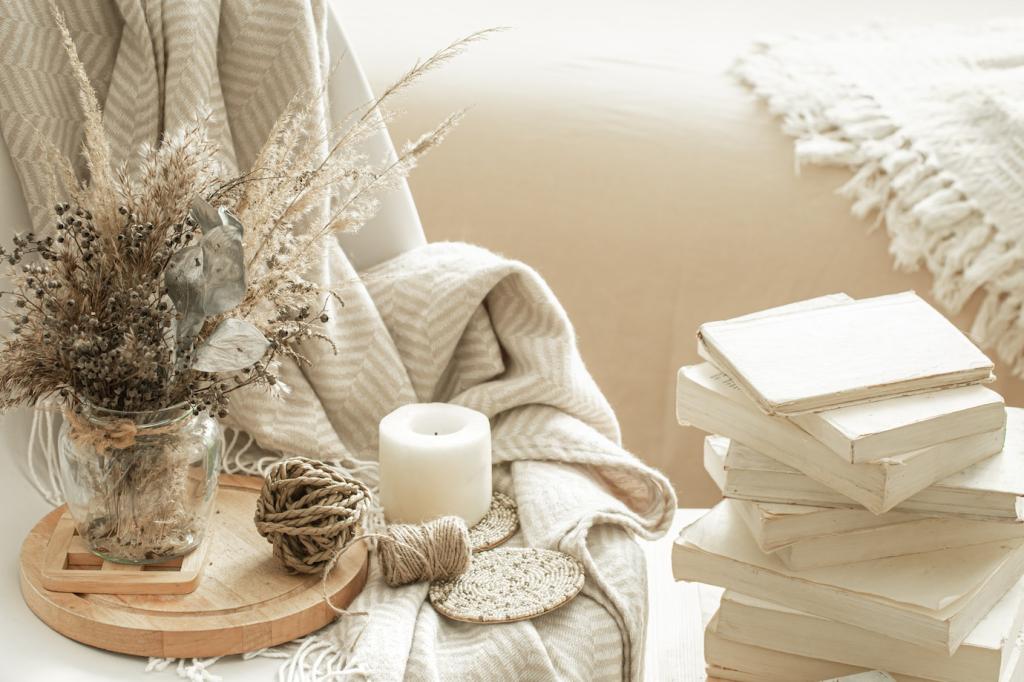Sustainable Materials and Textures in Interior Design
Sustainable materials and consciously crafted textures are redefining the landscape of interior design. As the world places a greater emphasis on eco-friendly living and responsible resource use, interior spaces are becoming showcases for imaginative yet sustainable solutions. This approach not only reduces environmental impact, but also results in visually rich interiors that celebrate nature and thoughtful craftsmanship. Embracing sustainable materials and textures is now considered essential for creating healthy, beautiful, and future-forward living spaces.

Eco-Conscious Consumer Trends
Modern consumers want spaces that mirror their values, prioritizing health, social responsibility, and environmental stewardship. This trend is driving interior designers to select materials with minimal carbon footprints, recycled content, and transparent sourcing. The result is interiors that combine personal expression with environmentally conscious choices, transforming homes into sanctuaries aligned with the greater good.
Certifications and Standards
There are several third-party certification systems such as FSC, LEED, and Cradle to Cradle, which have become vital benchmarks for material sourcing in sustainable interior design. These certifications guide designers in making informed choices, helping ensure that selected materials are responsibly harvested, manufactured with minimal toxins, and recyclable or biodegradable. Integrating such standards boosts a project’s credibility and client trust.

Natural Fibers and Renewables
Bamboo and cork exemplify the innovative use of rapidly renewable resources. Both materials regenerate quickly, requiring minimal pesticides and irrigation, making them exemplary choices for flooring, wall treatments, and furniture. Their inherent texture—whether the warm, undulating grain of bamboo or cork’s speckled surface—adds instant visual interest and warmth to a space.
Reclaimed and Upcycled Materials
Reclaimed wood from old structures retains patinas, saw marks, and knots, contributing history and unmistakable warmth to interiors. Similarly, salvaged metal from industrial sources can be transformed into striking fixtures and surfaces. The imperfections in these materials—weathered edges, nail holes, or oxidized finishes—add depth and authenticity unmatched by mass-produced counterparts.
Waste glass, often destined for recycling plants, finds new purpose as colorful terrazzo flooring, textured wall tiles, or artisan vessels. Likewise, broken ceramics can be transformed into mosaic artworks or accent pieces, showcasing sustainability through creative reimagination. These repurposed elements offer vibrant pops of color and tactile intrigue while diverting waste from the environment.
Designers are sourcing vintage furnishings not only for their sustainability, but also for their uniqueness and craftsmanship. Restoring or reupholstering vintage pieces preserves valuable resources and tells a narrative of past eras. The layered patinas, sculpted lines, and often unusual textures of vintage furniture elevate the originality of contemporary eco-friendly interiors.

Innovative Composites and Bioplastics
Plant-Based Bioplastics
Bioplastics derived from renewable sources like corn starch or sugarcane provide compelling alternatives to petroleum-based plastics. These materials can mimic the appearance and feel of traditional plastics, but their biodegradable properties mean less environmental impact. Used for decorative elements or furniture, plant-based bioplastics introduce smooth, sleek, and often unexpectedly warm tactile sensations.

Low-Impact Finishes and Treatments
Natural Oils and Waxes
Natural oil and wax finishes, made from ingredients like linseed or beeswax, penetrate surfaces to nourish woods and fibers without sealing off their texture. These finishes are free of harmful VOCs and enhance the grain, providing a soft, touchable sheen that is both beautiful and safe for indoor environments. The subtle luster they impart adds a sense of depth and richness to natural materials.
Water-Based Paints and Stains
Switching from solvent-based to water-based paints and stains reduces indoor air pollution and environmental toxicity. Designers can now select from water-based products offering vibrant colors and translucent washes, allowing underlying textures—like the brushstrokes on a plaster wall or the grain of wood—to remain visible while protecting the surface. This approach balances color with environmental sensitivity.
Non-Toxic Sealants and Glues
Traditional adhesives and sealants often release harmful chemicals, but sustainable innovations now offer non-toxic, plant-derived solutions. These products enable designers to bond materials while maintaining indoor air quality. Because non-toxic sealants adapt to a variety of surfaces, from wood to natural stone, they facilitate creative textural combinations without comprising health or sustainability.
The Role of Texture in Sustainable Interiors
Biophilic design leverages natural materials and textures—rough bark, pebbled stone, or woven grasses—to evoke the calming, restorative sensations of the outdoors. By physically and visually connecting interiors with the patterns and textures of nature, designers foster well-being while championing the use of renewable resources. This rich sensory landscape enhances both sustainability and quality of life.
Previous
Next
Local Sourcing and Artisan Craftsmanship
Indigenous Materials and Techniques
Designers increasingly look to materials indigenous to a region—such as rammed earth, native hardwoods, or river stones—to reduce environmental impacts. These materials reflect a site’s identity and history, while their naturally occurring textures connect interiors more meaningfully to their surroundings. Crafting with local resources preserves both the landscape and cultural heritage.
Handwoven Textiles and Surfaces
Local artisans infuse spaces with handcrafted beauty through techniques like weaving, carving, or pottery. Handwoven textiles bring rich, irregular textures and a sense of human touch, while hand-formed tiles or carved wood paneling tell unique stories. These bespoke elements transcend fleeting trends, anchoring interiors in both sustainability and tradition.
Community-Driven Collaborations
Designing with local communities goes beyond individual sourcing, fostering collaborative relationships that uplift regional economies. When interior design projects commission local makers for furnishings, wall art, or installations, the result is a celebration of unique textures, patterns, and creative expression. Such collaborations amplify both sustainability and social value in interiors.

